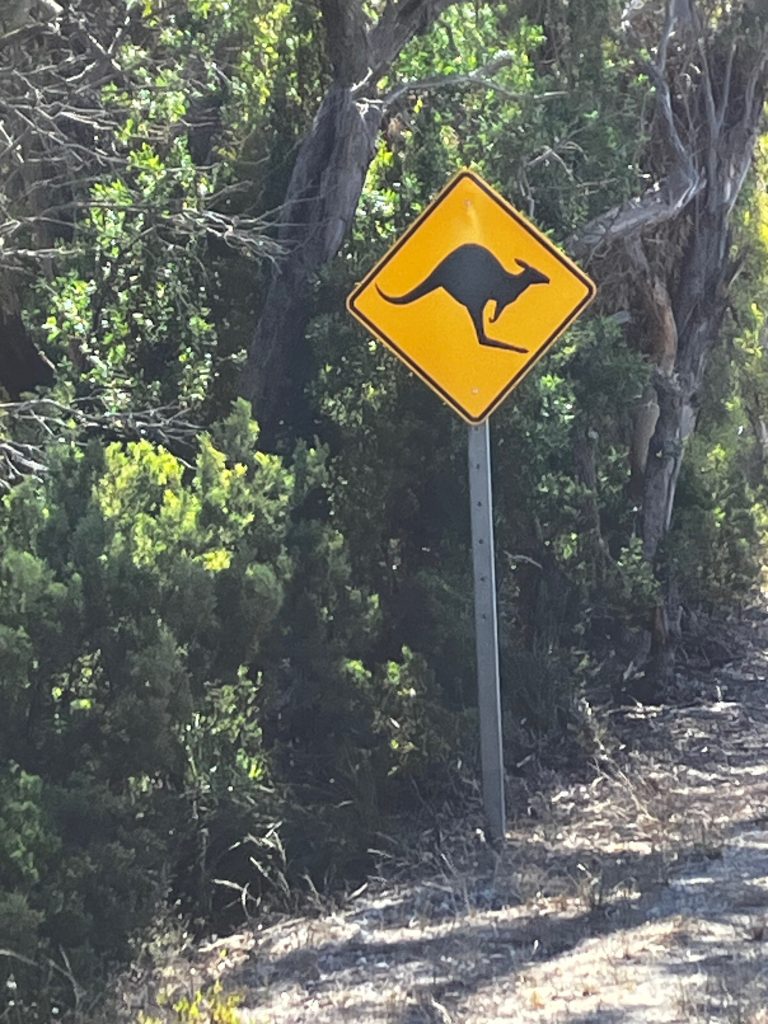
WHAT A DAY!
My first full day on Kangaroo Island started slowly. I read a few chapters of my book, did some laundry, wrote a blog post and left my room at 11AM, which was far later than I envisaged.
Anyway, I decided to stick with my original plan, which was to go to the farthest end of the island to the National Park and see what there was to see. So I set off in my trusty little Golf.
Turns out that the National Park was a 2-hour drive from where I was staying, so I settled into some lengthy podcast listening. This wasn’t a problem… I let all the episodes of Trevor Noah’s ‘What’s Next?’ bank up and I’ve been listening to them for most of the trip. The conversations are so interesting – I can highly recommend.
As I was driving, mostly on unmade roads with quite a few bumps and potholes in them, I saw a sign for ‘Seal Bay.‘ On a whim, I turned left and drove 10 km or so to reach it. Why not?
They have 2 types of tours. There’s a self-guided one for around $20 that lets you observe the beach from up on a boardwalk, as well as a guided tour for around $40 where you get to go down on the beach for 30 minutes or so.
I nearly cheaped out but I’m really glad I didn’t.
(I included this board below because it has a lot of information on it. I didn’t realise how rare the Australian sealions are.)

Our guide had a couple of rules for us before we set off for the beach.
- Stick together! Seal ions have bad eyesight, so if we stick in a group we look like a big blob, which they’re unlikely to attack.
- If the guide says “Move!”, then there’s no hanging around for just one more picture. The sea lions can run much faster on the sand than we can, so a strategic retreat is definitely the way to go.
I was really pleased that I arrived so late, as I saw some groups from a tour bus come back from the beach before we went down, and the groups were huge. Ours was only 8 people.

As we walked down towards the beach, the guide showed us the little rooms that the sea lions make under all of the scrub.
“They swim out to the Continental Shelf, which is anywhere from 70 – 100 kms away, they stay for a day to hunt, then swim back, avoiding sharks along the way. They’re 3 days away on average, and they’re exhausted when they get back. Unlike seals, which have a double coat, sea lions have a thin coating of hair, like us, so they can get cold. They move up on land to find shelter from the wind.”
They’d need to. It was a beautiful day but the wind was definitely blowing!
“Sometimes, if the weather is really bad, we find them up in the car park!” said the guide.
When the mothers leave the babies to go hunting, the babies are left alone. They’re vulnerable to predators. If a female comes back from hunting and her baby is gone, she won’t adopt an orphaned pup. Instead, she’ll call for her pup from the previous breeding season, who would now be 18 months old. She then feeds that pup again.
“The babies that are fed for 3 years are HUGE!” said the guide.
Predators aren’t the only things that the babies are vulnerable to. The females are fertile for only 24 hours every 18 months – which is usually around a week after they give birth. Pups are sometimes crushed by adults in the throes of passion, particularly the males, who don’t care anything for a random baby that might be in their way.

The path snaked down to the beach. It was a glorious day.
We were headed to a flat platform with two staircases down to the beach, but first we had to walk over a see-through bridge.
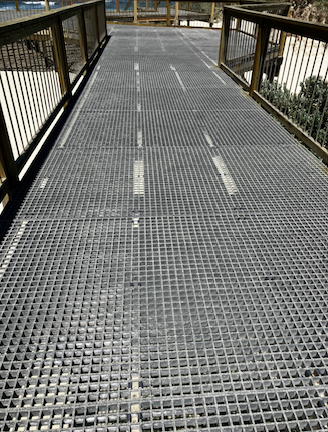

“Sometimes some of the pups crawl under the bridge for a snooze,” said the guide. “If you see one, please don’t stand right over the top of it… they’ll get a fright.”
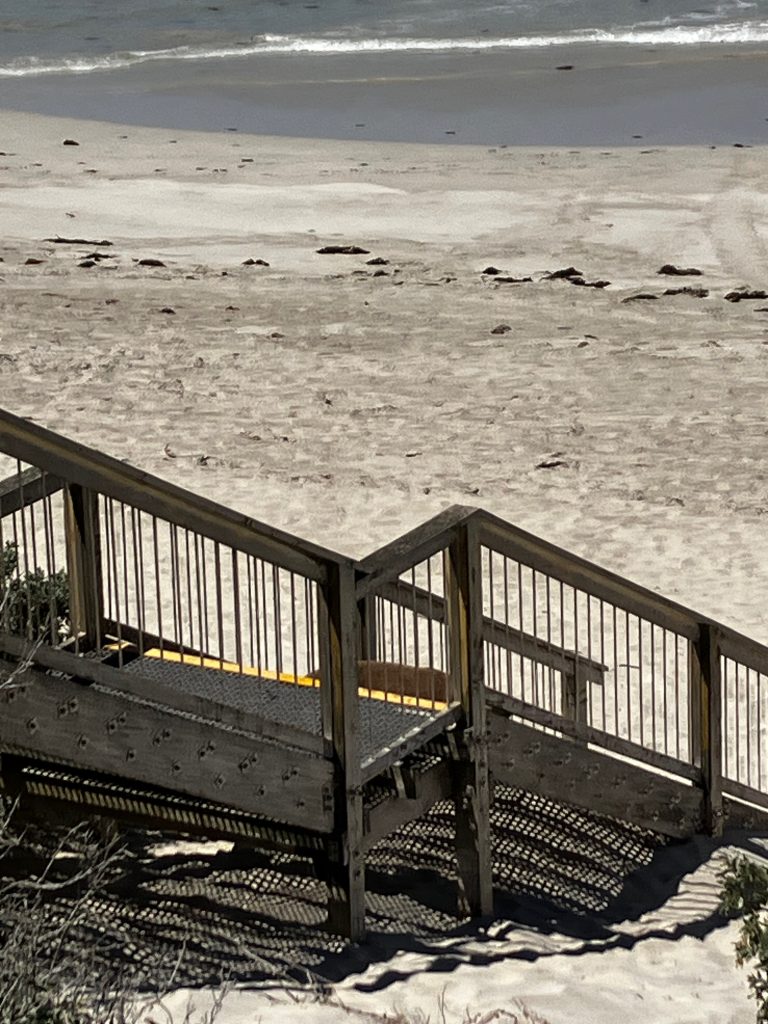
If you look just above the yellow line, you’ll see that a sea lion is blissfully sleeping on the step.
Suddenly the reason why there are TWO sets of steps was obvious!
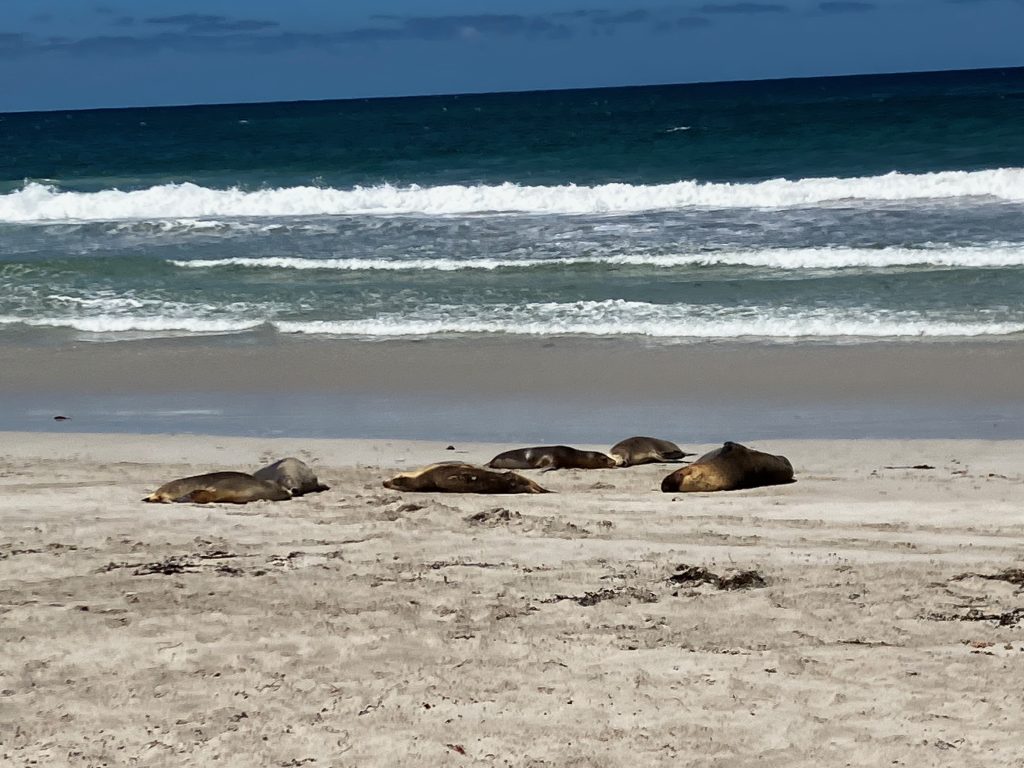
We walked down to the beach. There were sea lions scattered all over the place.
This video starts on its side but quickly reverts to high-quality viewing.
How lucky are we in this country that we get to experience being in the same place as these animals?
Halfway through, you’ll have to tip the screen to its side. But it’s worth it – this follows the sleeping staircase sea lion as she comes down to the beach. 🙂
This colony has around 800 sea lions, with around 200 pups born each season. There’s a 12% mortality rate, which means I don’t know how many pups survive because Maths.
The Australian sea lion is endangered, with numbers gradually decreasing as time goes on. This species stays close to its colony spot all year round, so if something awful happens to the colony, it’s basically wiped out forever.
98% of this colony are microchipped.
The tour lasts for 45 minutes, which was over in the blink of an eye. It was very special to be on the white sand, just a few metres away from these gorgeous animals.
Though the girls sound as if they’re much nicer than the boys. Just saying…
Anyway, once I finished the tour, I jumped back in the car and drove to the National Park, which was the original plan for today.
I was a little bit worried that I might have left my run too late, but I was hopeful I’d be able to see everything that I wanted to and still get home before dusk. There are so many signs on the island, warning about travelling at dawn and dusk and skittling wildlife. Honestly, I have seen more dead kangaroos or wallabies beside the road than I have seen live ones so it’s clearly a problem, and I’m in a little car so I really didn’t want to have a wallaby suddenly landing on my bonnet. That would not be a good holiday!
It took me an hour, I’d say, to get from Seal Bay to the national park.
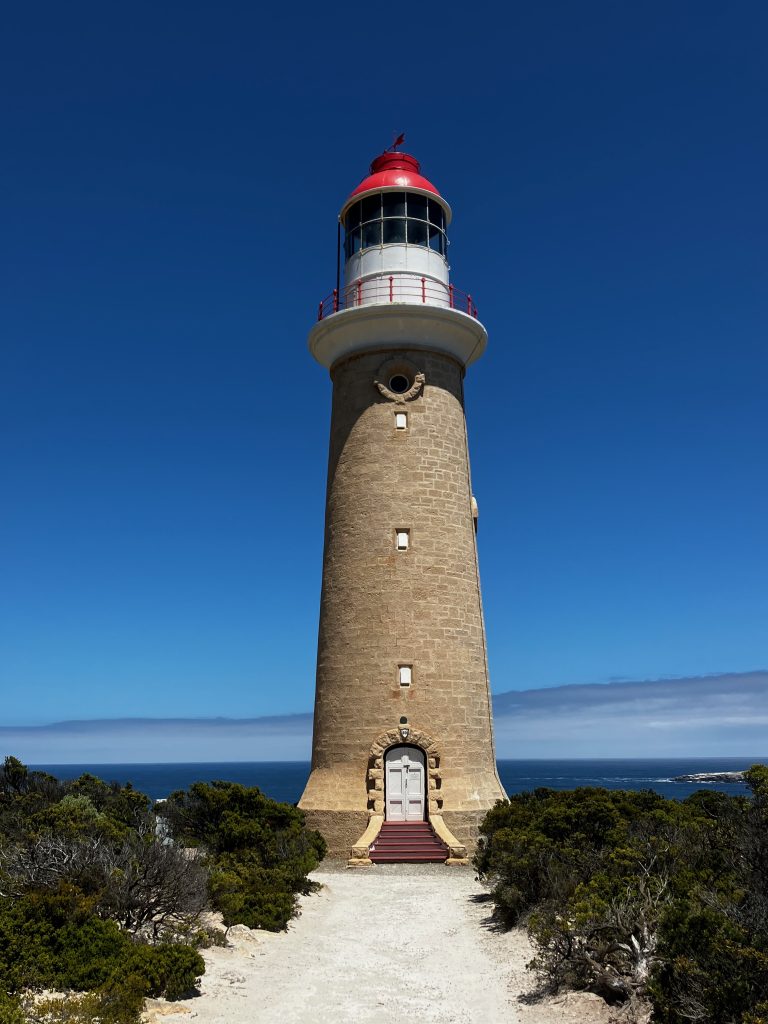
There were 3 things I wanted to see here. This was one of them.
The lighthouse has some groovy red steps, which, considering it was built in 1909 was very hip and happening of them. It’s still in use today, though now no one lives there… it’s all solar and LED lights.
I walked around here for a bit, then drove down to the Admirals Arch.

There’s an extensive boardwalk leading from the car park down to the cliffs. Look at the colour here! I wasn’t expecting this.

As I reached the cliff face, I saw an enormous sea lion, scratching himself like a dog. I watched him for a while, then realised that there was another one in the swirling waters around the rocks:

He was just being tossed around and leaping around, having a lovely time.
Then, as my eyes became attuned to the rocks, I realised that the place was practically seething with them! They were sunning themselves, bathing in the rock pools, which were probably warmed by the sun, and ducking in and out of the sea as if they were popping out to the shops to get a snack.
I stayed there for ages, just watching them. I freaking loved it.
I took photos, but unfortunately, the sea lions blend in with the colours of the rocks. Not worth showing you.

The stairs were still under construction at the very end. It was funny to see the sea lions so unconcerned about the noisy drills, saws and loud music playing.

Though this was a sobering sight. In 2020 most of the National Park was burnt out by ferocious bushfires. Sheltering here would be pretty terrifying…
The next stop was the Remarkable Rocks. I’ll save this for tomorrow, as it’ll be a very photo-heavy post.
Dad joke of the day:

The sea lions are so cute and it’s great when things work out for a small tour group.
There’s something about seeing animals in their natural habitats that can’t be beaten.
I never knew that seals and sea lions are different animals, I’d always assumed that they were just two names for the same thing. The way they galumph along the beach is very cute.